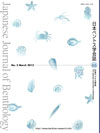66 巻, 2 号
選択された号の論文の5件中1~5を表示しています
- |<
- <
- 1
- >
- >|
原著論文
-
2012 年 66 巻 2 号 p. 71-81
発行日: 2012/03/27
公開日: 2012/11/09
PDF形式でダウンロード (2420K) -
原稿種別: 原著論文
2012 年 66 巻 2 号 p. 82-92
発行日: 2012/03/27
公開日: 2012/11/09
PDF形式でダウンロード (2765K) -
原稿種別: 原著論文
2012 年 66 巻 2 号 p. 93-101
発行日: 2012/03/27
公開日: 2012/11/09
PDF形式でダウンロード (4540K)
特集
-
原稿種別: 特集
2012 年 66 巻 2 号 p. 102-116
発行日: 2012/03/27
公開日: 2012/11/09
PDF形式でダウンロード (4093K) -
原稿種別: 特集
2012 年 66 巻 2 号 p. 117-130
発行日: 2012/03/27
公開日: 2012/11/09
PDF形式でダウンロード (3292K)
- |<
- <
- 1
- >
- >|
